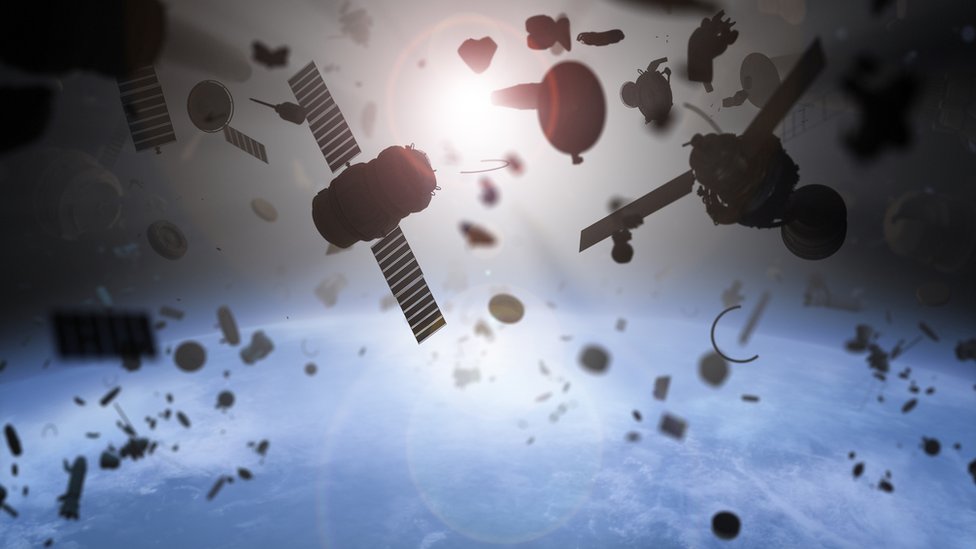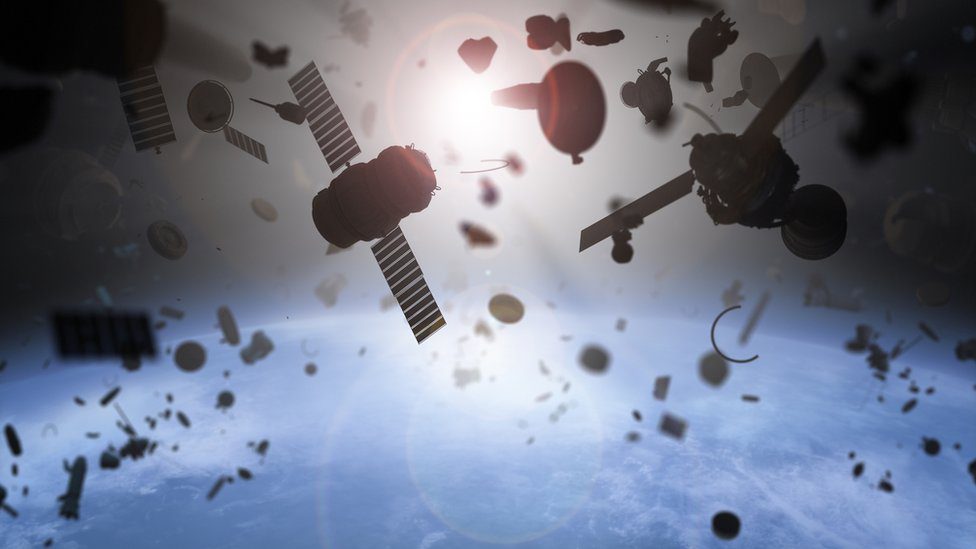Pieces of Orbiting Space Junk ‘Avoid Collision’
Two items of space junk expected to pass close to one another have avoided collision, said a company which uses radar to track objects in orbit.
LeoLabs had said a defunct Russian satellite and a discarded Chinese rocket segment were likely to come within 25m of each other.

It said there were no signs of debris over Antarctica on Friday morning.
Other experts thought Kosmos-2004 and the ChangZheng rocket stage would pass with a far greater separation.
With the objects having a combined mass of more than 2.5 tonnes and relative velocity of 14.66km/s (32,800mph), any collision would have been catastrophic and produced a shower of debris.
And given the altitude of almost 1,000km, the resulting fragments would have stayed around for an extremely long time, posing a threat to operational satellites.
LeoLabs, a Silicon Valley start-up, offers orbital mapping services using its own radar network.
Dr Moriba Jah, an astrodynamicist at the University of Texas at Austin, worked out the miss distance to be about 70m.
And the Aerospace Corporation, a highly respected consultancy, came to a similar conclusion.
With more and more satellites being launched, there is growing concern about the potential for collisions.
The big worry is the burgeoning population of redundant hardware in orbit – some 900,000 objects larger than 1cm by some counts – and all of it capable of doing immense damage to, or even destroying, an operational spacecraft in a high-velocity encounter.
Read Also: Idris Elba We All Can Help Solve Climate Change
This week, the European Space Agency released its annual State of the Space Environment report, which highlighted the ongoing problem of fragmentation events.
These include explosions in orbit caused by left-over energy – in fuel and batteries – aboard old spacecraft and rockets.
On average over the last two decades, 12 accidental fragmentations have occurred in space every year – “and this trend is unfortunately increasing”, the agency said.
Also this week, at the online International Astronautical Congress, a group of experts listed what they regarded as the 50 most concerning derelict objects in orbit.
A large proportion of them were old Russian, or Soviet-era, Zenit rocket stages.



